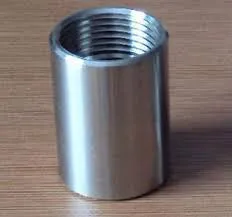-
Cangzhou Yulong Steel Co., Ltd.
-
Phone:
+86 13303177267 -
Email:
admin@ylsteelfittings.com
- English
- Arabic
- Italian
- Spanish
- Portuguese
- German
- kazakh
- Persian
- Greek
- French
- Russian
- Polish
- Thai
- Indonesian
- Vietnamese
- Zulu
- Korean
- Uzbek
- Hindi
- Serbian
- Malay
- Ukrainian
- Gujarati
- Haitian Creole
- hausa
- hawaiian
- Hebrew
- Miao
- Hungarian
- Icelandic
- igbo
- irish
- Japanese
- Javanese
- Kannada
- Khmer
- Rwandese
- Afrikaans
- Albanian
- Amharic
- Armenian
- Azerbaijani
- Basque
- Belarusian
- Bengali
- Bosnian
- Bulgarian
- Catalan
- Cebuano
- China
- China (Taiwan)
- Corsican
- Croatian
- Czech
- Danish
- Esperanto
- Estonian
- Finnish
- Frisian
- Galician
- Georgian
- Kurdish
- Kyrgyz
- Lao
- Latin
- Latvian
- Lithuanian
- Luxembourgish
- Macedonian
- Malgashi
- Malayalam
- Maltese
- Maori
- Marathi
- Mongolian
- Myanmar
- Nepali
- Norwegian
- Norwegian
- Occitan
- Pashto
- Dutch
- Punjabi
- Romanian
- Samoan
- Scottish Gaelic
- Sesotho
- Shona
- Sindhi
- Sinhala
- Slovak
- Slovenian
- Somali
- Sundanese
- Swahili
- Swedish
- Tagalog
- Tajik
- Tamil
- Tatar
- Telugu
- Turkish
- Turkmen
- Urdu
- Uighur
- Welsh
- Bantu
- Yiddish
- Yoruba

Oct . 19, 2024 11:47 Back to list
Reliable Manufacturer of Stainless Steel Flanges for Various Industrial Applications
The Essential Role of Stainless Steel Flanges in Modern Industry
In today's industrial landscape, the use of stainless steel flanges has become increasingly integral across various sectors. As a manufacturer of stainless steel flanges, one must appreciate the essential qualities that these components bring to numerous applications, from oil and gas to water treatment and beyond. This article explores the significance, advantages, manufacturing processes, and applications of stainless steel flanges.
Understanding Stainless Steel Flanges
Flanges are mechanical components used to join two parts of a piping system. Made of different materials, stainless steel flanges have become a preferred choice in numerous industries due to their durability, corrosion resistance, and aesthetic appeal. Stainless steel itself is an alloy that typically consists of iron, carbon, and a minimum of 10.5% chromium, which significantly enhances its properties.
The primary types of stainless steel flanges include weld neck, slip-on, blind, and threaded, among others. Each type serves a unique purpose and is selected based on specific requirements, such as pressure ratings, temperature conditions, and the types of fluids being transported.
Advantages of Stainless Steel Flanges
1. Corrosion Resistance One of the most significant advantages of stainless steel flanges is their resistance to corrosion. This property is crucial for applications involving harsh chemicals or environments prone to moisture.
2. Durability Stainless steel flanges exhibit exceptional durability, able to withstand high temperatures and pressures—making them suitable for demanding industrial conditions.
3. Versatility Stainless steel flanges can be used in various applications across different industries, including petrochemical, food and beverage, pharmaceutical, and water treatment. Their adaptability makes them a go-to choice for manufacturers.
4. Aesthetic Appeal The polished surface of stainless steel flanges offers an inherent aesthetic quality that is particularly valuable in applications where appearance is important, such as architectural projects.
The Manufacturing Process
stainless steel flanges manufacturer

The manufacturing of stainless steel flanges involves several key steps to ensure quality and consistency. The initial stage starts with selecting high-grade stainless steel alloys. Once the material is sourced, the manufacturing process typically follows these steps
1. Cutting Large stainless steel plates are cut into the desired shapes and sizes using plasma, laser cutting, or waterjet cutting technology.
2. Forming The cut pieces are then formed into flange shapes using methods like stamping, forging, or machining. This step involves creating precise dimensions and ensuring the flanges meet industry standards.
3. Surface Treatment Post-forming, the flanges undergo surface treatment processes such as polishing, passivation, or coating to enhance corrosion resistance and visual appeal.
4. Quality Control Rigorous testing and inspection are conducted to ensure that every flange meets the relevant standards and specifications. This may include pressure testing, dimensional checking, and non-destructive testing methods.
5. Finishing and Packaging Finally, the flanges are carefully packaged to prevent damage during transportation, ensuring they arrive at their destination in perfect condition.
Applications of Stainless Steel Flanges
Stainless steel flanges find applications in a myriad of industries. In the oil and gas sector, they are used to connect pipes and valves in refining and distribution processes. The food and beverage industry relies on stainless steel flanges for sterile connections in processing equipment. Moreover, in the pharmaceutical industry, these flanges are crucial in maintaining sanitary conditions in manufacturing processes.
Water treatment facilities also utilize stainless steel flanges to ensure the safe transport of water and wastewater. The construction industry employs stainless steel flanges in structural applications, where durability and aesthetic appeal are necessary.
Conclusion
As a manufacturer of stainless steel flanges, understanding the critical role that these components play across various industries is paramount. Their unique qualities, coupled with advanced manufacturing processes, make stainless steel flanges an indispensable part of modern infrastructure. By continuing to innovate and improve production techniques, manufacturers can cater to the ever-evolving demands of industries while maintaining a commitment to quality and sustainability. The future of stainless steel flanges appears bright as they remain at the forefront of industrial applications, proving integral to efficiency and reliability in pipe systems worldwide.
Latest news
-
ANSI 150P SS304 SO FLANGE
NewsFeb.14,2025
-
ASTM A333GR6 STEEL PIPE
NewsJan.20,2025
-
ANSI B16.5 WELDING NECK FLANGE
NewsJan.15,2026
-
ANSI B16.5 SLIP-ON FLANGE
NewsApr.19,2024
-
SABS 1123 FLANGE
NewsJan.15,2025
-
DIN86044 PLATE FLANGE
NewsApr.19,2024
-
DIN2527 BLIND FLANGE
NewsApr.12,2024
-
JIS B2311 Butt-Welding Fittings LR/SR 45°/90° /180°Seamless/Weld
NewsApr.23,2024











